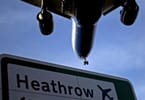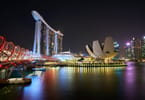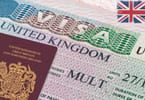The most recent hijacking by Somali sea terrorists of a supertanker, carrying 300,000 tons of crude oil from Saudi Arabia to the United States, is yet another wake up call for the countries of the naval coalition. The action took place some 1.300 kilometers off shore from Somalia, and was reportedly initiated by a so-called mothership from which the fast skiffs were launched to capture the vessel.
What is, however, even more disturbing is that several other attempted attacks in this very area of the sea were reported in recent days, and no naval coalition vessel appears to have been dispatched to investigate, safeguard shipping and as and when possible attack and capture the pirates.
Contacts of this correspondent in Nairobi and Mombasa were subsequently guarded, when directly challenged what else it would take to finally give the warships a more robust mandate at sea and permit them to actively deny the pirates safe havens at land.
Asked what the naval forces would do should a passenger cruise ship fall into the hands of pirates, there was little more than stunned silence, making it clear that contingency plans for such an eventuality were either top secret and not even to be acknowledged or simply absent, with everyone hoping it would never happen.
American drones, based in the Seychelles, presently fly unarmed across the Indian Ocean, engaged in purely reconnaissance and intelligence gathering missions, while naval ships have to go through cumbersome procedures when engaging the skiffs and motherships, often allowing pirates to get away, or sink their armaments and then pretend to be fishermen.
It is clear, though, that while the 200 miles economic exclusion zone along the Somali coast line should by and large be respected, areas beyond – into the open ocean – must sooner rather than later be declared no-go zones for suspected pirates, with the clear understanding that both skiffs and motherships will be immediately engaged by naval forces, while the drones should be able to play their part too in this scenario.
It must also be made clear to whatever “authorities” there are in Somalia and its various breakaway regions, that hot pursuit into the 200-mile zone off the Somali coast will be conducted, should skiffs and motherships try to flee back into their own waters, and that in the future their land bases too will become targets to effectively deny them the options to resupply and hide on land.
Should, and it can only be hoped that it will not happen, a passenger cruise vessel be captured, the cost in terms of human lives could be major, and going by present experience of naval ships standing by and observing a hijack, as in the recent case of a British couple (it appears from latest reports that a team of trained UK marines on that vessel was stood down at the last moment instead of being ordered to engage the pirates), and the last minute abandonment of previously planned rescue missions by special forces, there seems little prospect of a decisive counteraction.
Maybe it will take such a major tragedy and loss of lives to eventually trigger a rethink among the naval coalition of how to deal with the sea terrorists, and to substantially toughen the rules of engagement, provide them with a robust mandate and allow them to comprehensively engage the terrorists from the air, at sea and on land in order to bring the menace under control. Until then, the problem from hell will persist.
WHAT TO TAKE AWAY FROM THIS ARTICLE:
- Should, and it can only be hoped that it will not happen, a passenger cruise vessel be captured, the cost in terms of human lives could be major, and going by present experience of naval ships standing by and observing a hijack, as in the recent case of a British couple (it appears from latest reports that a team of trained UK marines on that vessel was stood down at the last moment instead of being ordered to engage the pirates), and the last minute abandonment of previously planned rescue missions by special forces, there seems little prospect of a decisive counteraction.
- Maybe it will take such a major tragedy and loss of lives to eventually trigger a rethink among the naval coalition of how to deal with the sea terrorists, and to substantially toughen the rules of engagement, provide them with a robust mandate and allow them to comprehensively engage the terrorists from the air, at sea and on land in order to bring the menace under control.
- It must also be made clear to whatever “authorities” there are in Somalia and its various breakaway regions, that hot pursuit into the 200-mile zone off the Somali coast will be conducted, should skiffs and motherships try to flee back into their own waters, and that in the future their land bases too will become targets to effectively deny them the options to resupply and hide on land.






















